A numerical feeder protection relay would trip when a collector feeder breaker is closed due to inrush at a solar photovoltaic site. The inrush current is due to energizing power transformers. This article demonstrates how to use harmonic blocking to prevent this unwanted tripping.
Magnetizing inrush currents may cause overcurrent elements to operate when the line is energized. The fundamental magnitude of this inrush current is often multiples of the rated transformer load current. Second harmonic blocking logic can prevent this by blocking such elements until the inrush currents have subsided. This logic (see Figure 2) uses the ratio of the second harmonic content of each phase to the fundamental current of the same phase to calculate the percent harmonic content.
Phase Current Second Harmonic Content
The relay tripped on inrush current immediately after the collector breaker closed. Figure 1a is the oscillography captured by the relay during such an event.
The top set of traces is the measured primary phase current. The second set of traces is the absolute value of the secondary phase current along with the pickup of the high set instantaneous phase overcurrent element (50P1). Review of Figure 1a reveals the following:
- The current magnitude for all three phases is high enough to trip.
- A-phase current is the lowest magnitude (that is, total content).
- The third trace shows the second harmonic content in A-phase over the entire event.
- The current momentarily drops out on all three phases over the course of the event.
Figure 1b shows the actual amount of fundamental and second harmonic current per phase.
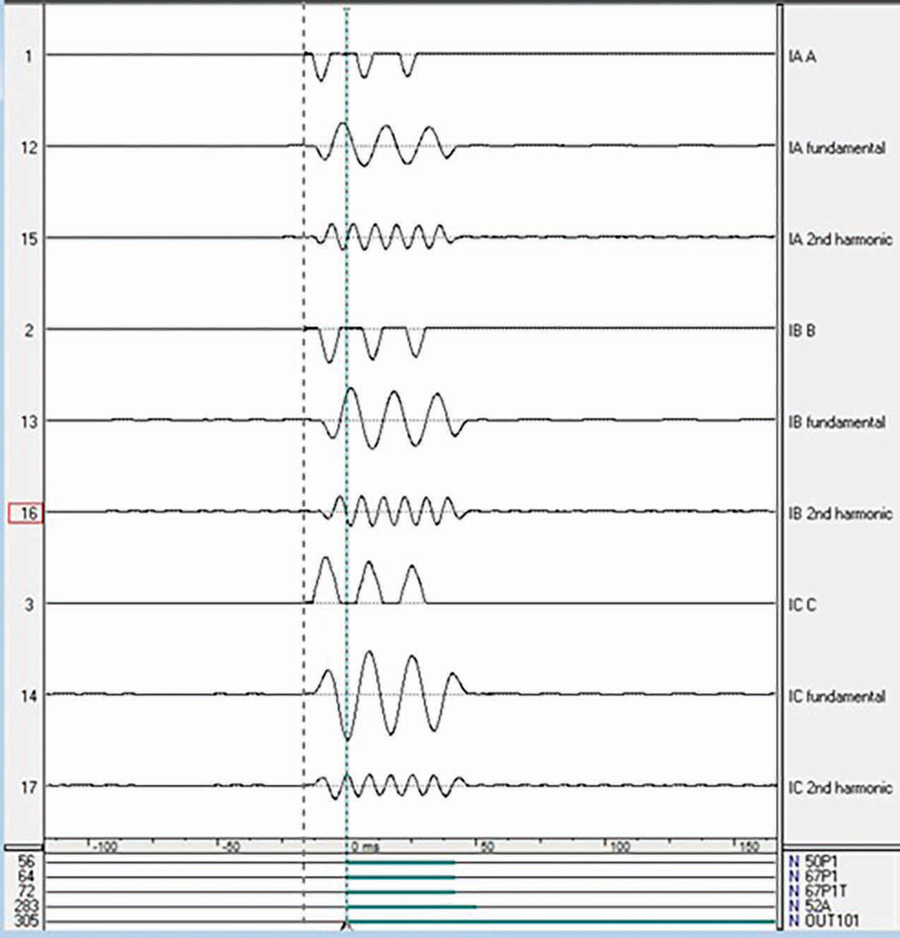
SECOND HARMONIC BLOCKING LOGIC
Figure 2 is the relay second harmonic blocking logic.
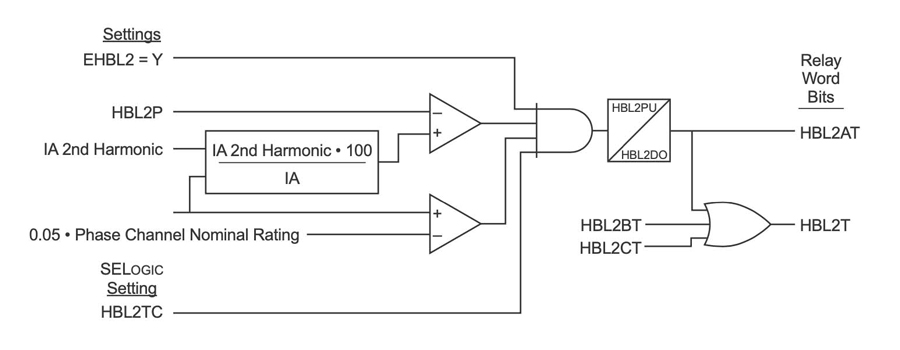
Set EHBL2P to Y to enable second harmonic blocking. Use the NOT HBL2T relay word bit in the 67P1TC torque equation to prevent the instantaneous high set phase overcurrent element from operating during inrush. The typical default pickup setting for HBL2P is 10% (that is, the ratio of second harmonic current magnitude to the fundamental current magnitude per phase).
The blocking relay word bit for a phase asserts when the torque-control equation HBL2TC evaluates to logical 1, and if the second harmonic content of that particular phase (for this example, IAHC2 for A-phase) exceeds the adjustable pickup threshold HBL2P for the pickup time delay HBL2PU. The output de-asserts once the output is asserted, if the second-harmonic content falls below the threshold for the dropout time delay HBL2DO. If any of the phase outputs asserts, relay word bit HBL2T also asserts.
Set the second harmonic blocking to assert for the lowest level of second harmonic content. Use a small time delay on pickup to ride through the periods of dropout.
HARMONIC CONTENT ANALSYS
The harmonic analysis processes data in units of integer cycles. So the minimum range needed to capture between the two cursors in the oscillography shown in Figure 1a is one cycle. Grabbing a little over one cycle of data towards the end of the inrush signature provides the lowest case scenario for harmonic content (Figure 3).
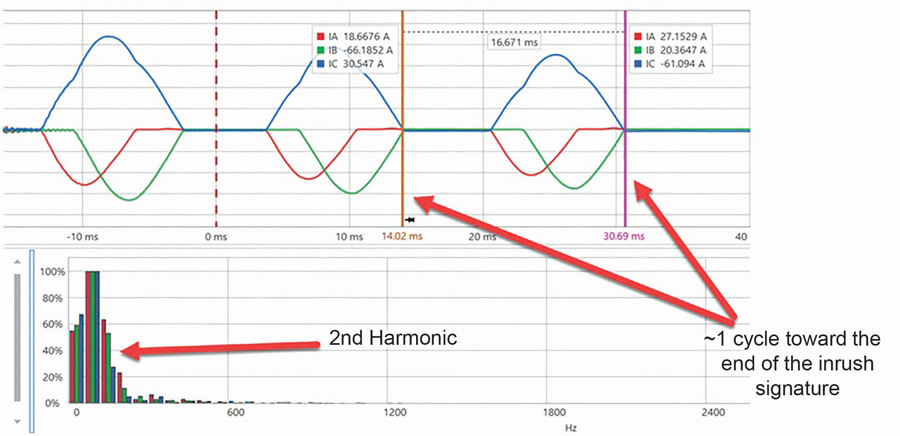
You can see for this specific event (Figure 4) that the values for all phases exceed the 10% threshold, which meets our criteria. Figure 4 shows that phase C is the actual lowest at 27.6%.
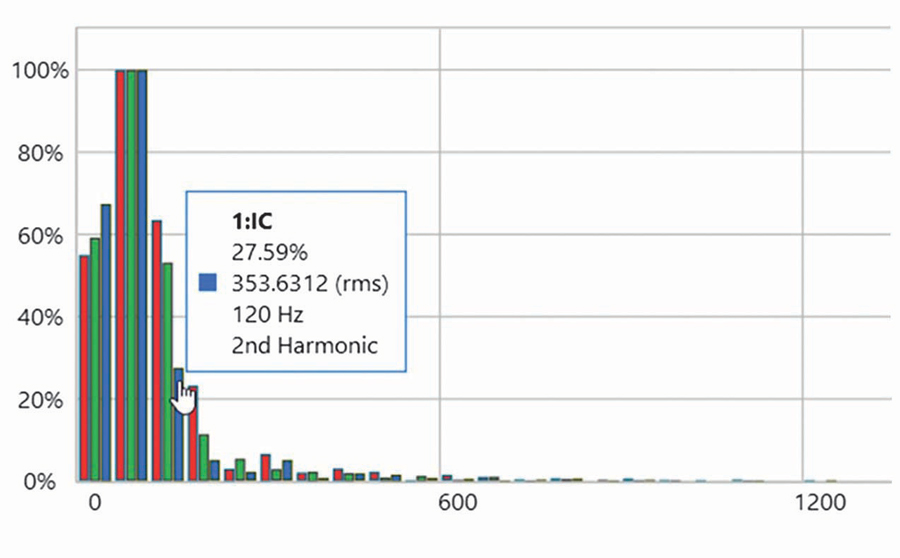
CONCLUSION
A numerical feeder protection relay would trip when a collector feeder breaker is closed due to inrush at a solar PV site. This article demonstrates how to use harmonic blocking to prevent this unwanted tripping.
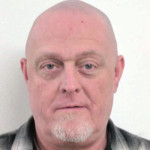
Steve Turner is in charge of system protection for the Fossil Generation Department at Arizona Public Service Company in Phoenix. Steve worked as a consultant for two years, and held positions at Beckwith Electric Company, GEC Alstom, SEL, and Duke Energy, where he developed the first patent for double-ended fault location on overhead high-voltage transmission lines and was in charge of maintenance standards in the transmission department for protective relaying. Steve has BSEE and MSEE degrees from Virginia Tech University. Steve is an IEEE Senior Member and a member of the IEEE PSRC, and has presented at numerous conferences.
